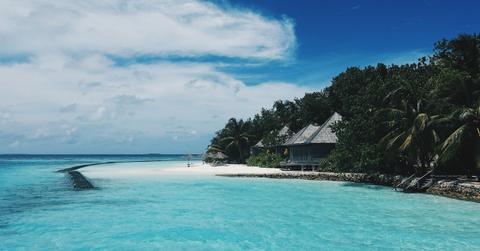Hawaii Sources The 'Spirit Of Aloha' In Pursuit Of 100% Renewable Energy
Renewable energy is sometimes thought of as futuristic. But in Hawaii, where 100 percent renewable power will soon be standard, it is tradition and cultural codes that are at the heart of many energy projects.
Updated May 24 2019, 4:15 a.m. ET
It is natural, when thinking about renewable energy, to think of the future. The concept of large-scale, renewable power has often been portrayed as a far-off dream, not something that can be accomplished in the very near future. This is in spite of the fact that many places--entire U.S. cities or states, in some cases--have committed to producing energy through entirely renewable means.
One such state is the island paradise of Hawaii. In 2015, Governor David Ige signed the landmark bill HB623 into law, ensuring that by 2045, 100 percent of Hawaii's electrical energy would be produced via renewable resources. This was particularly good news for Hawaiian citizens, as current electrical costs across all of Hawaii's islands are high. Hawaii has long been the U.S.'s most petroleum-dependent state, relying on petroleum for 80 percent of its electrical energy.
So how does a state so dependent on traditional fuels make a leap into the future of renewable energy? According to Ramsay Taum, the cultural sustainability planner of urban planning firm PBR Hawaii & Associates, Hawaii's energy goals won't be accomplished simply by bringing outsiders, such as energy specialists, to the islands.
Instead, Hawaiians must take up the mantle of responsibility themselves, and recognize that they are "all in the same canoe," Taum stated at the VERGE Hawaii Conference last week.
"If you’re in the private sector, nonprofit or community, you may have significantly different internal goals that you want to achieve," Taum told Greenbiz, following the conference. "There is a significant difference between the financial goals of shareholders, many of whom may not even be here on the islands, competing with the social, cultural and environmental issues of people on the ground. And when you have competing interests, it becomes very difficult to get there."
Elaborating on this point, Tuam said in his interview with Greenbiz that Hawaiian leaders must rely on uniquely Hawaiian cultural concepts, such as the "spirit of Aloha," to see them through the challenges of making the switch to renewable energy. The "spirit of Aloha" is a set of traditional Hawaiian guidelines to help one solve problems and settle disagreements, comprised of five main principles, which include: kindness, unity, gentleness, humility, and patience.
Tuam isn't the only Hawaiian who holds the spirit of aloha in high regard. According to an article co-written by Tuam and his longtime mentor Pilahi Paki, a keeper of cultural wisdom known to some as the "keeper of the secrets of Hawaii," once prophesied that the world would look to Hawaii for guidance during a time of great global difficulty. The most valuable thing she predicted that Hawaii could offer a troubled world? The concept of Aloha.
Joshua Stanbro, the first appointed resilience officer for the city of Honolulu, agrees that change for Hawaii will likely come from within, and that this self-reliance could well serve as an example to the rest of the world. "We are a test bed for this in a lot of ways," Stanbro told Greenbiz. "We have a very small grid, we’re not able to lean on folks from outside our neighboring states. If we can figure it out here, then anyone can do it."
This uniquely Hawaiian approach to the state's energy revolution was on full display at the VERGE Hawaii Conference, where, even after vigorously disagreeing with one another in a debate about the future of clean energy, Maui mayor Alan Arakawa and Commissioner of the Hawaiian Public Utilities Commission Loraine Akiba shared a hug.
As Taum stated after the conference, such disagreements cannot stand in the way of Hawaii's clean energy vision. "Everyone who is here needs to acknowledge that we may not agree on everything, but once we get in the canoe [a sustainable future], we have to agree on the destination [a path for the 2045 goal]," Taum told Greenbiz.
